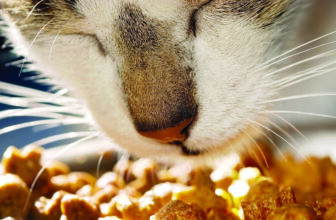
Check out our latest products
November is Pet Diabetes Month, making it the perfect time to learn about this serious but manageable condition affecting our furry family members. Understanding diabetes can help you spot early warning signs and give your dog or cat the best possible care.
Diabetes in Dogs and Cats
Diabetes mellitus happens when your furry companion’s body cannot properly control blood sugar levels. This occurs because the pancreas doesn’t make enough insulin, or the body doesn’t respond to insulin correctly. Insulin is like a key that allows sugar to enter cells for energy. Without it working properly, sugar builds up in the bloodstream while cells starve for energy.
Warning Signs to Watch For
The main symptoms of diabetes are easy to remember as the “four P’s”:
- Polydipsia (excessive thirst)
- Polyuria (increased urination)
- Polyphagia (increased appetite)
- Progressive weight loss (even while eating well)
You might also notice cloudy eyes, frequent infections, or your dog or cat seeming more tired than usual. These signs develop gradually, so they’re easy to miss at first.
Risk Factors
Certain furry companions face higher diabetes risk. Middle-aged female dogs are more commonly affected, especially breeds like Samoyeds, Miniature Schnauzers, and Poodles. Cats typically develop diabetes later in life. Overweight animals, those with a history of pancreatitis, or those on long-term steroid medications also have increased risk.
Natural Prevention Strategies
Weight Management
- Keep your pet at a healthy weight through proper portion control and regular exercise
- Obesity is a major risk factor for diabetes, especially in dogs
- Regular weigh-ins at your vet clinic can help track progress
Diet Quality
- Feed a complete and balanced commercial diet with an AAFCO statement on the label
- Choose foods with low glycemic index ingredients like soybeans rather than high glycemic foods like potatoes
- Consider prescription diets designed to help regulate blood sugar levels
Regular Exercise
- Maintain consistent daily activity levels
- Exercise helps with weight control and can improve insulin sensitivity
- Keep activity levels steady rather than having very active and very inactive days
Getting a Diagnosis
If you notice these symptoms, schedule a vet visit promptly. Your veterinarian will run blood tests and check your furry companion’s urine to confirm diabetes. Sometimes stress can temporarily raise blood sugar, so additional tests might be needed to make sure it’s truly diabetes.
Treatment and Management
While diabetes requires lifelong management, many animals live happy, normal lives with proper care. Treatment typically involves:
- Daily insulin injections (usually twice daily)
- Consistent feeding schedules
- Regular exercise routines
- Ongoing monitoring with your vet
The key is maintaining steady routines. Feed your dog or cat the same food at the same times each day, and keep activity levels consistent.
Natural Management Approaches
Dietary Management
- Fiber: Look for diets with 5-15% fiber for normal weight pets, or 10-20% for overweight pets
- Choose foods with more insoluble fiber (like cellulose) rather than soluble fiber
- Low fat: This is especially important since many diabetic dogs also have pancreatitis
- Consistent timing: Feed meals 10-12 hours apart at the same times daily
Feeding Schedule
- Stick to regular meal times – no free-feeding
- Feed the same amount of the same food every day
- Avoid sudden diet changes, as these can affect blood sugar levels
Supplements That May Help
- L-carnitine may help with fat metabolism in overweight diabetic dogs
- Always discuss any supplements with your veterinarian first
These natural methods work best when used alongside proper veterinary care, not as replacements for medical treatment.
Living with a Diabetic Dog or Cat
Managing diabetes becomes routine once you establish a system. Your vet will teach you how to give insulin injections and monitor your furry companion’s condition. Most dog and cats adjust well to injections, and the needles are very small.
Watch for signs of low blood sugar, like weakness or confusion. If this happens, apply corn syrup to your dog or cat’s gums and contact your vet immediately.
Early detection makes all the difference in managing diabetes successfully. If you notice any warning signs, don’t wait – contact your veterinarian right away. With proper care and your commitment, your furry companion can continue enjoying life to the fullest.


![[PETHROOM] Cat Nail Clipper Trimmer for Indoor Cats with Circular Cut Hole (2mm) | Premium Sturdy Stainless Steel Blade Cat Claw | Safe, Easy, Accurate, Quiet & Fast | Avoid Overcutting](https://m.media-amazon.com/images/I/6156hi88deL._AC_SL1298_.jpg)
![[PETHROOM] Professional Eye Comb for Pets | Stainless Steel Tear Stain Remover for Cats & Dogs | Gentle Round-Head Grooming Tool | Compact & Portable for Eye Gunk Removal](https://m.media-amazon.com/images/I/71+W758uwXL._SL1500_.jpg)
![[petora] BRUSH ON ME Gentle Facial & Eye Comb for Dogs & Cats | Smooth & Stress-Free Tear Stain Remover | Fine-Tooth Grooming Tool with Rounded Tips | Comfortable Grip for Daily Pet Grooming](https://m.media-amazon.com/images/I/81hzVmjgV1L._SL1500_.jpg)









